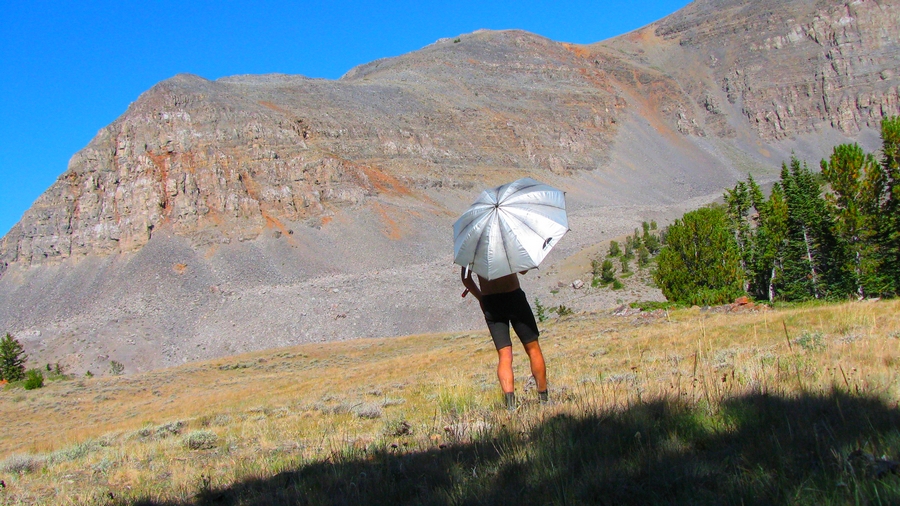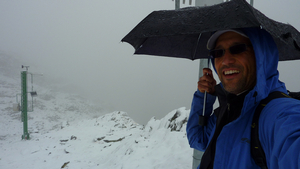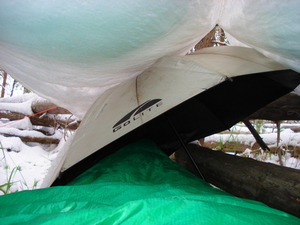When I’m out hiking on an adventure trail, hikers often ask, “Why are you carrying an umbrella?”
What they’re really thinking is: “Hey moron, what’s with the stupid umbrella?”
An umbrella seems out-of-place in the wilderness. It’s for city folk, not for macho backpackers and hikers in the wilderness. However, hiking with an umbrella is not as foolish as it looks. I’ve used umbrellas on the Appalachian Trail, Pacific Crest Trail, and Continental Divide Trail. An umbrella has protected me also during treks across Costa Rica’s Osa Peninsula jungle, Slovakia’s Tatra Mountains, and Ukraine’s tallest peak. They’ve also served me well during by trek across the Pyrenees and El Camino de Santiago. Most recently, I’ve been using umbrellas extensively during my 4-year trip in Africa.
I find an umbrella superior for most backpacking and hiking adventures. Here are 10 reasons why . . .
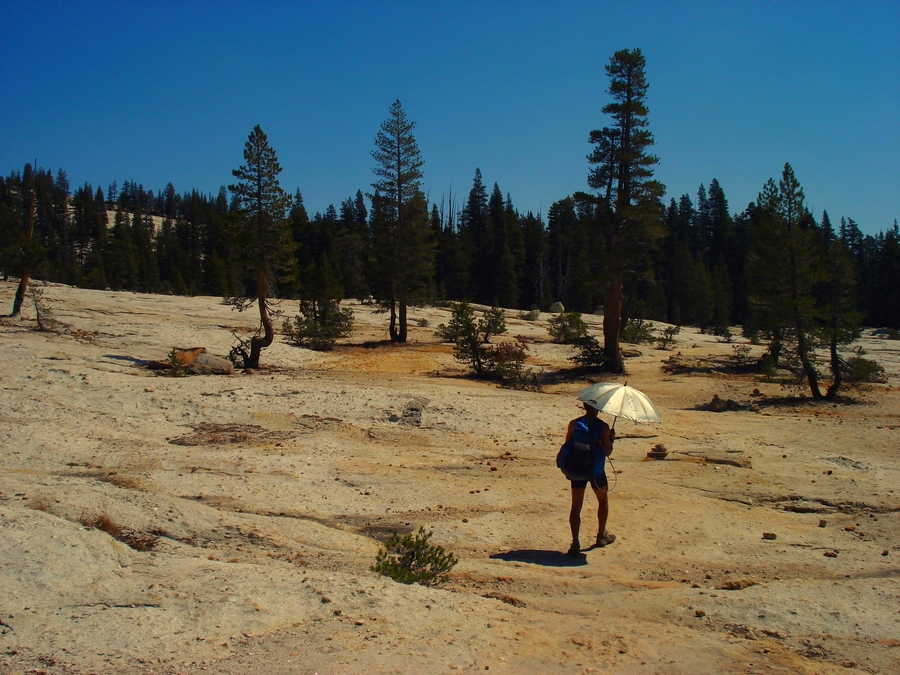
1. Umbrellas protect backpackers in rainstorms
Let’s start with the obvious: umbrellas work. They stop rain. If they didn’t, they wouldn’t sell throughout the planet. As obvious as this is, some backpackers act like umbrellas just don’t work.
But if they didn’t work, then Americans wouldn’t buy 33 million umbrellas every year. That’s remarkable: 1 in 10 Americans buys an umbrella each year. Why? Because umbrellas are one of the most successful ways of protecting humans from precipitation.
2. Umbrellas provide more ventilation than any rain jacket
I usually don’t backpack with a rain jacket because I find that no rain jacket offers as much rain protection and ventilation as an umbrella. The ventilation is important because it postpones overheating.
For example, on the Appalachian Trail, my hiking partner Lisa wore a rain jacket, but by the time she would get to the top of a mountain, she would be soaked—in sweat, not rain. That wetness would help take her down the path of hypothermia because of the cold winds at the summit.
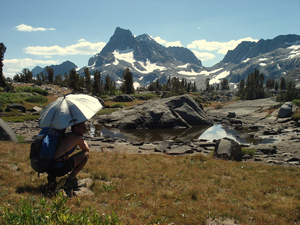
An umbrella helps regulate your temperature because it lets the heat that your body generates while hiking evaporate quickly. Even “breathable” rain jackets trap a significant amount of heat.
With an umbrella, as you near the top of a mountain, you can add a layer of clothing before your body starts to cool during the descent.
3. Umbrellas weigh less than most rain jackets
At 230 grams (8 oz), the super light umbrellas weigh about nearly half as much as a typical “breathable” rain jacket. Thru-hikers are fanatical about minimizing their pack weight, so this is yet another good reason to use an umbrella for rain protection.
Lisa discovered that I was staying drier than she was, so after New Hampshire she sent her rain jacket home and used a light umbrella for the 12 remaining states on the Appalachian Trail.
4. Umbrellas work in snowstorms too
Snow effortlessly flakes off an umbrella, thereby protecting you. In Eastern Europe, people often use umbrellas even in the snowy winters.
Of course, if you’re going to do winter camping, then a rain jacket (or a parka) is probably better than an umbrella (see below to understand why).
Still, for a freak summer snowstorm, umbrellas do the job.
5. Umbrellas excel during off-and-on rain periods
When it’s raining on and off all day, the poor rain jacket wearer has to go through a complex, time-consuming ritual every time he removes or dons his rain jacket.
Meanwhile, an umbrella user can effortless whip out or stow her umbrella during the intermittent rain (the photo below shows how I stow my umbrella behind my back because it’s comfortable and easy to access).
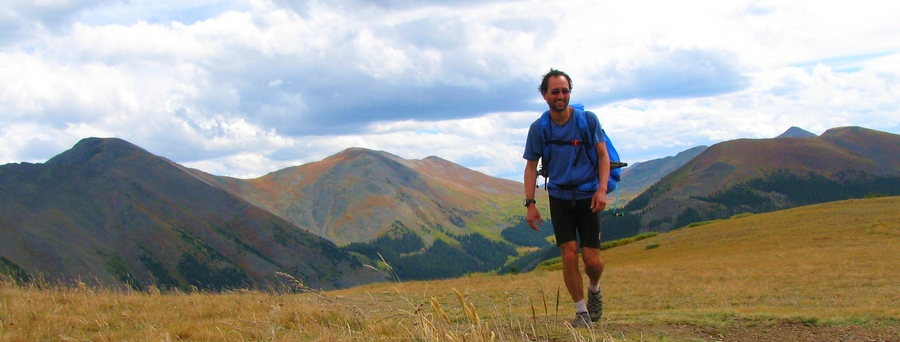
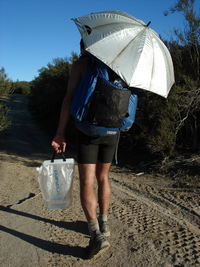
6. Umbrellas protect you against the sun
What did your mom tell you to do when it was cold outside?
“Put on a hat!”
OK, my mom didn’t say that either, but she should have.
It’s smart to put on a hat when it’s cold. You lose about 15% of your body heat through your head. And that’s precisely why I prefer an umbrella over a sunhat when the sun is beating down on you. The sunhat just traps heat in, offsetting most, if not all, the benefits of the limited shade it delivers. Hats give you limited shade (barely covering your face unless it is wide brimmed, which then could get blown away by a gust of wind).
An umbrella gives you a ton of shade (usually down to the knees) and lets heat escape from your head, keeping you cool. Moreover, you can shed layers and walk around shirtless (or a sports bra if you’re a woman) and enjoy the airflow and shade.
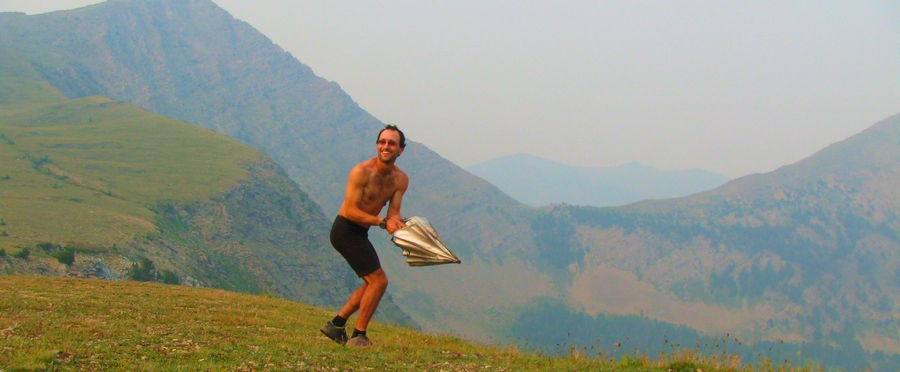
7. The umbrella offsets its weight penalty
Lightweight backpackers whine about the umbrella adding weight to their minimalist gear list. However, hiking under shade all-day long will dramatically lower your water needs, especially on hot days. If you don’t have an umbrella, you’ll need to carry at least an extra liter of water to make up for the sweat loss. You’ll also have to carry more sunscreen to protect a greater portion of your body. All this extra weight will be more than an umbrella.

8. Umbrellas provide a micro-shelter
- A privacy screen: As thru-hiker Christine Haffner said, “One of the biggest reasons why I was sold on the umbrella: it offers a place to pee behind. This is most beneficial for women, but also for men. Especially in really crowded areas where you cannot find a place to pee, you just find a tree to block one side of you, and the umbrella to block the other side. There is really no other piece of backpacking gear that will provide this for you. SOLD!”
- Map and meal cover: When it’s pouring rain, it’s awkward to study a map or to prepare a meal, but an umbrella’s canopy makes it much more pleasant.
- Plug a tarp hole: If rain is sneaking into your tarp (because you did a sloppy setup), then an umbrella can plug a hole.
- A poor man’s pack cover: With a 40-inch canopy, you can drape half of the umbrella over the top of your backpack, providing it with partial cover, while still protecting you.
- Eyeglass protector: If you wear eyeglasses, umbrellas let you gaze around easily without getting your eyeglasses wet. A rain jacket’s hood forces you to stare at the ground or get your eyeglasses wet.
9. Umbrellas can be an anchor point for your tarp or shelter
I’ve sometimes used an umbrella as an anchor for my tarp when trees are lacking (as the photo below illustrates).
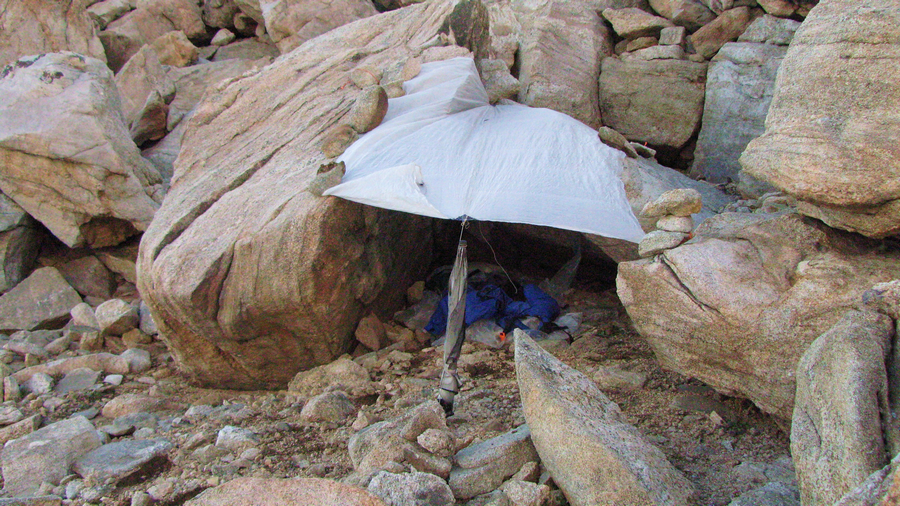
10. Umbrellas can be an all-purpose stick
Umbrellas can be a:
- Poor man’s ice ax.
- Short stick to balance on when fording a river.
- Way to defend yourself against a snake.
- Great way to smack someone who says you’re ridiculous for bringing an umbrella into the woods.

Although those are 10 great reasons to use an umbrella while hiking or backpacking, critics still have questions. So let’s answer them….
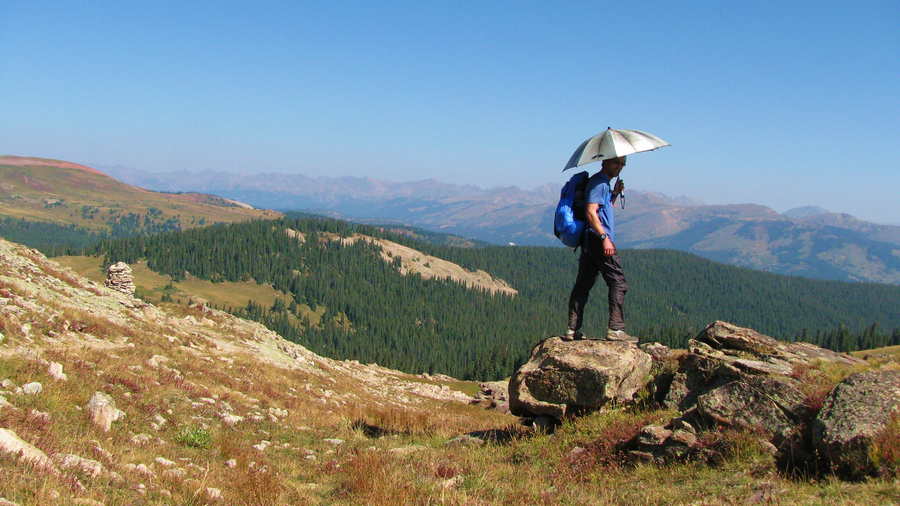
Let’s address the top 10 questions people have about backpacking with an umbrella.
1. But don’t you need a jacket anyway?
Probably, but unless you’re hiking in freezing temperatures, an ultralight (sub-4 oz) jacket is good enough. Despite all the advertising, there’s no such thing as a truly breathable rain jacket. Breathable shell jackets are much more breathable and lighter than rain jackets. My ultralight jacket weighs 3.5 ounces. The lightest rain jackets weigh 8 ounces, but they suck in truly rainy weather. To get an excellent rain jacket that will keep you dry in a sustained downpour, you’ll need something that weighs at least 12 oz and probably more like one pound.
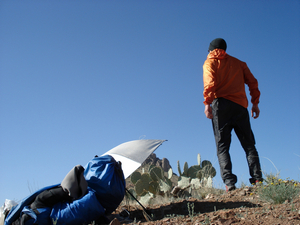
Compare that to an umbrella (8 oz) + soft shell jacket (3.5 oz) = 11.5 oz. A good rain jacket will weigh 25-50% more than an umbrella + soft shell jacket combo.
What’s the point of a soft shell jacket? It protects you against a little bit against wind, rain, and cold. It also protects you against mosquitoes. If you really need something to keep you warm, a fleece or insulated jacket will do a much better job than a rain jacket. If you need something to keep you dry, an umbrella will trump a rain jacket, especially if it’s warm enough to make you sweat with the rain jacket on.
2. Do your arms get tired holding the umbrella?
I never get tired of holding the umbrella and I often have it deployed for 10 hours a day. There are two secrets to not getting tired:
- Get a light umbrella (300 grams / 10 ounces or less).
- Lean the umbrella against your body and switch hands occasionally.
Often the angle of the sunlight allows you to rest the umbrella shaft against your shoulder. While you still have to hold the handle, the weight is distributed against your body/chest/shoulder, so it doesn’t feel heavy at all.
When the sun his setting in front of you, you have little choice but to hold it out in front of you (see photo below). This is the most taxing position, but it rarely lasts long since the sun does set, trees block it at that angle, or the trail changes direction.

If you do get fatigued, just switch hands. Let’s say the sun is hitting your right side and you’re tired of holding it in your right hand. I’ll hold it in my left hand and have the shaft rest against the back of my neck so that the canopy is still sheltering my right side from the heat and UV. It gives my right hand a break and since most of the pressure rests on my neck, my left hand doesn’t get tired at all (and the umbrella is so light that my neck doesn’t tire either).
3. What about fixing the umbrella to your backpack so you don’t have to hold it?

Some hikers like to make some place to prop their umbrella on their pack so that they don’t have to hold it and can continue using their trekking poles.
However, it’s a bad idea because the umbrella is fixed. Since trails and sun are constantly changing, you need to adjust the umbrella to provide optimum shade. If you’re going to carry a half-pound piece of gear, you might as well use 100% of it, not 25% of it.
Unless the sun is directly overhead, propping the umbrella will provide sub-optimum coverage. If the sun is at an angle, then an umbrella that is pointed straight up is only protecting your head from the sun, whereas a tilted umbrella can cover 80% of your body (the only part of my body that was exposed was just below my knees). If you’re just interested in protecting your face from the sun, just get a wide-brimmed hat.
4. What about umbrellas with reflective canopies?
I have tested umbrellas with a reflective material side-by-side ones that have a black canopy. I’ve put a thermometer under each canopy to see if I could detect a difference. My tests were not scientific, but I was disappointed with the results. Yes, the reflective umbrella is cooler than the black one. However, the difference is small, just a couple of degrees.
On the other hand, a subtle difference adds up over time. If a couple of degrees saves you from tipping you into heatstroke-land, then it’s worth it. Perhaps it’s just psychological, but it sure feels cooler under a reflective canopy.
Despite the minor temperature difference, I still recommend the reflective canopy. It’s only $10 more and the umbrella will last for many years. You’ll appreciate those extra degrees when you’re walking across a hot desert.
One thing is clear: any umbrella has a dramatic effect on shielding you from a hot dry sun. When it’s blazing hot outside, it’s better to have ANY umbrella than just to have a measly sunhat which traps all the heat in your head.
When I was traversing a 44 kilometers (20 miles) of exposed beach in Costa Rica, I bumped into a red man. He was sunburned and said that he had heatstroke the day before after walking just 5 km. When he saw me, he said, “Duh! Now that’s what I should have taken!”
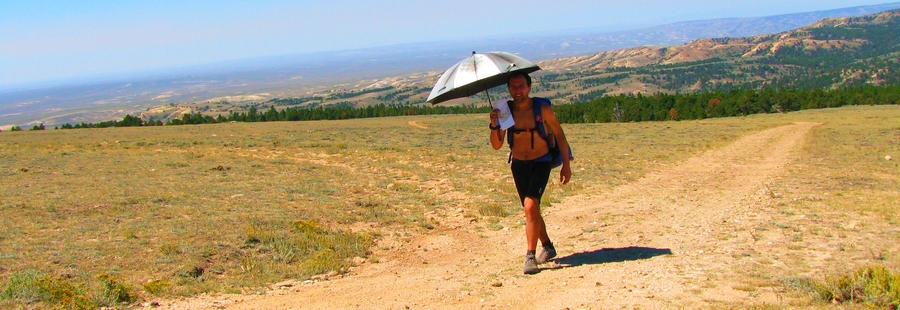
5. So if umbrellas are so great, why don’t hikers use them more often?
- Some hikers can’t let go of their trekking poles. Himalayan Sherpas carry far more weight than the typical backpacker and their joints don’t let them down. If you lighten your total pack weight to under 10 kg (22 pounds), then you may discover that trekking poles are no longer necessary. Try it. Drink so much water that your pee is always clear.
- Backpacking gear manufacturers don’t want you to consider umbrellas. A nice rain jacket costs $300. A nice umbrella costs $30. You don’t need a Harvard MBA to figure out why the backpacking industry doesn’t want to encourage hikers to use umbrellas. If umbrellas would somehow cost $400, then more manufacturers would promote their utility. Even GoLite, one of the few outdoor companies that make umbrellas, buries their umbrellas deep in their catalog. (Another reason they bury it deep in the catalog is that there’s simply not that much demand for umbrellas.) Fortunately, GoLite hasn’t eliminated umbrellas from the product line.
6. But don’t umbrellas break?
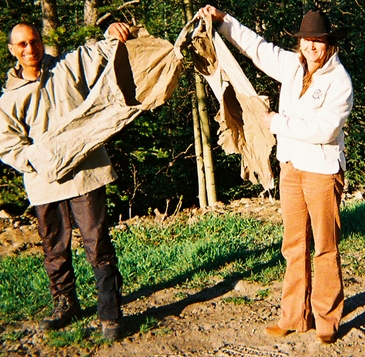
Good ones are hard to break. The backpacking-specific umbrellas that I list at the end of this article are different than the standard $5 collapsible umbrella. The reason so many people believe umbrellas are weak is that they’ve only used cheap umbrellas. It’s like someone believing that all cars are slow, but they’ve never driven a Ferrari.
And so what if it breaks? Everything can break. Your tent poles can break. Your stove can break. Your inflatable pad can puncture. Your sleeping bag can get soaking wet. Your backpack’s straps can snap. You get the idea.

Francis Tapon is half Chilean and half French and he was born and raised in San Francisco, California. He’s been to over 80 countries, but he keeps coming back to this magical city because he loves earthquakes.
He spoke Spanish at home, French at school, and English everywhere else. He can get by in Portuguese and Italian, barely survive in Russian and Slovenian, and speak a few other languages.
Francis has an MBA from Harvard Business School and co-founded a successful Silicon Valley company that did robotic vision. He left his technology life to walk across America four times. He has thru-hiked the Appalachian Trail and the Pacific Crest Trail, and in 2007, became the first to do a round-trip on the Continental Divide Trail. In 2009, he was one of the finalists for the California Outdoors Hall of Fame, which “features nominees who are world-renowned for their skills and who have helped inspire thousands of others to take part in the great outdoors.”
Francis has written a couple of travel books including The Hidden Europe: What Eastern Europeans Can Teach Us and Hike Your Own Hike: 7 Life Lessons from Backpacking Across America. He also produced a 77-minute video about his CDT Yo-Yo.

